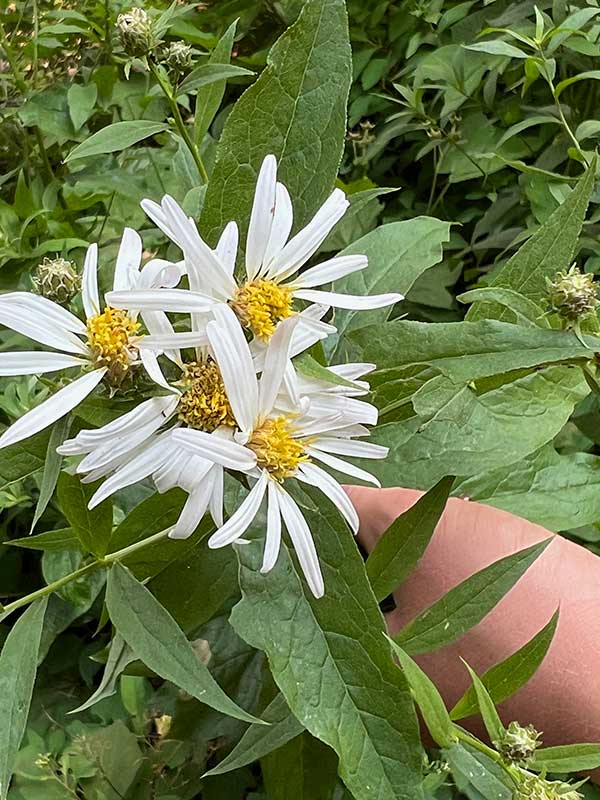Doellingeria engelmannii / Engelmann’s aster
- shade tolerant – in mountain woods and meadows
- late summer/autumn blooming
- each blossom/flower has only a few curly rays around a yellow disk
- ray florets mostly white, but possibly pink or blue
- ovate leaves, mostly hairless and sessile; prominent veins.
Synonyms: Aster elegans var. engelmannii, Aster engelmannii, Eucephalus engelmannii
Englemann’s aster (no longer actually in the genus Aster*) is a late summer/autumn bloomer found in mountain woods and meadows. It is shade tolerant and found mostly in at least partial shade.
This species is a perennial herb that grows from woody caudex. It can grow as tall as 5 feet although less than that seems likely in the Valley. The stems branch only toward the top, creating a raceme inflorescence that holds several flower heads.
The blossoms have only a few (8-13) often slightly curled rays. The curling gives them somewhat of a ragged appearance. They are generally whitish in color, but may also be pink or light blue. Below the heads is an involucre with pointy, hairy-edged bracts, the tips of which have purple-ish margins. The rays surround a yellow center of disk florets.
The leaves of Englemann’s aster are oval or elongated-oval and up to 4″ long. They are mostly hairless and sessile or with short petioles. The veins are prominent. The leaves vary in size by position on the stem with the largest ones midway up. Basal leaves are smaller and generally wither and fall off by the time of flowering.
Like many other members of the Aster family, the fruit is a “dandelion-like” hairy achene.
Although this is not an especially rare plant, there seems to be no body of folklore or ecological studies about it; all the molecular studies have to do with its classification, so this is all I can say. Some species are like that.
* For an interesting and readable discussion of the systematics and taxonomy of the Aster/Composite family, click here.
| Color | |
|---|---|
| Family | |
| Blossom size | |
| Inflorescence size | |
| Inflorescence type | |
| When? | |
| Where? |



